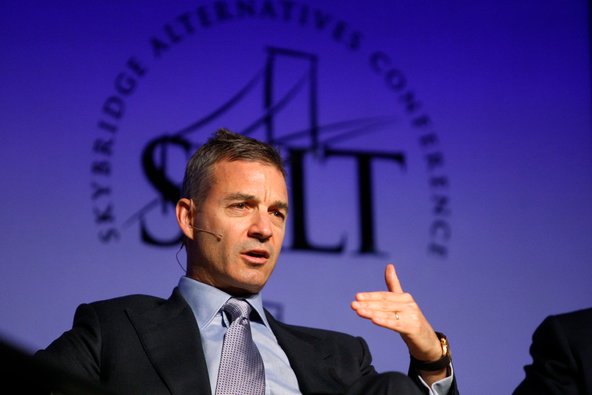 Steve Marcus/ReutersDaniel S. Loeb, founder of Third Point, at a conference in Las Vegas last year.
Steve Marcus/ReutersDaniel S. Loeb, founder of Third Point, at a conference in Las Vegas last year.
4:50 p.m. | Updated
The activist investor Daniel S. Loeb is parting ways with Yahoo.
Mr. Loeb, whose campaign to change Yahoo culminated in the appointment last year of Marissa Mayer as the company’s chief executive, has submitted his resignation from the board, Yahoo said Monday.
Two other directors originally nominated by Mr. Loeb’s firm, Harry J. Wilson and Michael J. Wolf, are also stepping down. The resignations, effective July 31, will leave Yahoo with a seven-member board, the company said.
In addition, Yahoo has agreed to buy 40 million shares of its stock from Mr. Loeb’s firm, Third Point, at a price of $29.11 a share, the closing price on Friday. That will leave Third Point with about 20 million Yahoo shares, or less than 2 percent of the common stock outstanding.
Third Point, which initially disclosed a 5.15 percent stake in Yahoo in September 2011, more than doubled its investment in less than two years. It initially paid about $509 million for 40 million shares, which it sold on Monday for $1.16 billion.
Shares of Yahoo fell $1.25, or 4.3 percent, to close at $27.86 on Monday.
The hiring of Ms. Mayer from Google last July was considered a coup for Yahoo, an aging technology company in need of a new direction. She has overseen a string of acquisitions since then, including the $1.1 billion deal for Tumblr in May.
“Since our board’s rigorous search led us to hire Marissa Mayer as C.E.O., Yahoo’s stock price has nearly doubled, delivering significant value for shareholders,” Mr. Loeb said in a statement.
Mr. Loeb spearheaded a hard-fought campaign that led to the ouster of the previous chief executive, Scott Thompson, in May 2012.
Yahoo said on Monday that Max Levchin, a co-founder of PayPal, would remain on the board. His appointment in December was supported by both Third Point and the board.
The share repurchase plan announced Monday is part of Yahoo’s previously announced plan to buy back $1.9 billion of stock, the company said.
“Daniel Loeb had the vision to see Yahoo for its immense potential — the potential to return to greatness as a company and the potential to deliver significant shareholder value,” Ms. Mayer said in a statement. “While there’s still a lot of work ahead, they’ve given us a great foundation.”
Article source: http://dealbook.nytimes.com/2013/07/22/activist-investor-to-step-down-from-yahoo-board/?partner=rss&emc=rss
